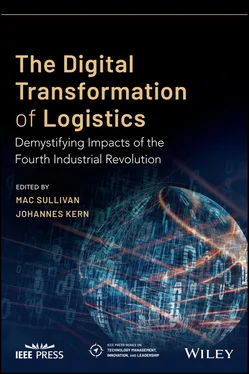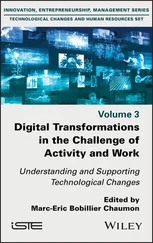1 ...6 7 8 10 11 12 ...34 Traditional B2B companies are struggling to adapt and catch up as their lower‐level white‐collar worker ranks are bogged down by complacency and low levels of retention. The sense of urgency has not set in, yet. Protests over Amazon opening up a new headquarter in New York (Feiner 2019) and an increasingly larger media profile surrounding the automation involved in their warehouses (Bose 2019) reflect the communities' cognition that hub economy companies' consolidation of market share may not be beneficial to all despite offering convenience and a lower price tag. For every million dollars in revenue that companies like Amazon take from traditional businesses like Walmart, it is estimated that four jobs are lost in the community (Kaplan 2015). Adopting cutting‐edge technology, such as automation and AI, and venturing into different market sectors have traditionally not been the core focus of many logistics companies as prioritization has tended to focus on more tangible short‐term customer‐oriented results or supplier management. The underlying global supply chain is shifting beneath us, and there is evidence to suggest a change is coming that will necessitate a reprioritization.
Current State of the Logistics Industry
Effects of the Second and Third Industrial Revolutions on Logistics
Logistics was born out of the need for military groups to travel efficiently around the world, and the term was borrowed by international trading companies as they looked to deliver their goods (Bonacich and Wilson 2011). The industry was further developed by the advent of the steam engine as its propelled cargo on trains and boats at faster paces. For this chapter, the term logistics will represent third‐party logistics (3PLs) or freight forwarding companies, who provide transportation, warehousing, and compliance support to the global trade network. Logistics is an industry built on relationships, information arbitrage, and strategic outsourcing from retailers and manufacturers of their transportation coordination needs to specialized companies that only do this in one form or another.
Logistics has transformed in terms of complexity as it moved from break‐bulk shipping into the containerized and air freight modes of transportation and now into an increasingly complex logistics network that is being constructed around consumer demand. The Third Industrial Revolution brought about a foundational shift in the levels of transparency available via Internet‐enabled computers that opened up new forms of competition for incumbent players as the amount of capital needed to be involved in the process decreased dramatically. Transparency led to more competition that result to lower margins on the supply side; however, at the same time, it also decreased the amount of manual labor needed that reduced costs (McKinsey&Company 2018).
Technology Is Easy; But People Are Hard
With $1.5 trillion being spent every year on logistics, new entrants are quickly entering the market, and incumbents are frantically trying to solidify their position (Gould 2018). As a critical control mechanism of global supply chain activities, global logistics service providers, of which freight forwarding companies are part of, are facing a new set of requirements from supplier and customers, and they are having to adjust their organizational competencies and align processes (Chen et al. 2019). Societal adoption of technology has traditionally varied even when the talent and infrastructure have been in place, and researchers propose that there are typically social impediments to technology transplantation (Mokyr 1996).
Technological adoption in large logistics companies has been slow as top‐line demands, corporate bureaucracy, large geographic presence, and a lack of innovation culture stifle even the most well‐resourced technological investments. Senior executives from top 20 logistics company have stated, “Digital platforms are just for the next generation”, “Temporary labor automated process flows would never work in a country like China” and “Blockchain is a topic from 10 years ago” (Bao et al. 2018). Changing perceptions and stances on the impacts of potentially pervasive technology takes time and is often a seismic event to put things into perspective as shown by recent events during the outbreak of COVID‐19.
The Role of Startups in the Logistics Community
Large multinational logistics companies are seeing a steady outflow of senior talent to niche technology‐driven supply chain and logistics startups. Startups are primed for leveraging technology as they have significantly less overhead and less bureaucratic structures to overcome as they explore new service and product value propositions (Tipping and Kauschke 2016). Much of the logistics and supply chain disruption starting to happen has been led by agile companies, startups or not, who can utilize digital tools to bolster strategic investments in sales, marketing, and distribution, to more quickly and more effectively deliver value to their customer (Schwab 2015). Logistics companies have typically not attracted the most innovative, the most intellectual, nor the most technologically sophisticated talent, simply because they have not needed to as the industry required strong communication and relationship soft skills, some basic computer, and math hard skills and not much more to get where the industry is today.
Logistics Companies Under Pressure
Macolm McLean's invention of the standardized shipping container not only gave rise to some of the largest international transportation companies today but also helped to decimate the manufacturing communities of some of the largest consumer nations like the United States and Japan and those in Western Europe (Levinson 2016). With the recent influx of protectionism and the decreasing cost of physical automation, near‐shoring manufacturing is making localization of production more of a reality, and those same nations above can bring manufacturing home again. Even though freight rates are a fraction of what they were in the days of break‐bulk shipping, logistics costs are on the rise and are no longer considered a small percentage of the landed cost. When brands or trading companies evaluate their total landed cost of goods, logistics have traditionally represented a small amount, hence the lack of scrutinization and upskilling of in‐house talent to handle these roles. Manufacturing costs are lowering due to the affordability of robotics, and this is causing transportation to be a much larger factor when determining the selling price of a product to the end consumer (Kelly 2017). Under more scrutiny, logistics companies must adapt by lowering their selling rates that can only be sustainable by lowering the inputs of their services and products.
Technology Investments by Logistics on the Rise
Increased pressure from customers, startups, economic forces, and suppliers is causing senior executives from many top logistics companies to more closely evaluate what role technology will play in reducing their costs (Riedl and Chan 2019). From sales to finance, white‐collar positions in logistics are increasingly seeing that everyday technology available on their phones has not been represented at their work. Using investments in technology by logistics companies as a barometer, the industry is at a tipping point. The investment community has taken notice, and much‐needed capital injections to digitize this traditional B2B industry are happening regularly.
From 2012 to 2017, there were over 3 billion dollars invested in logistics and shipping startups (Riedl and Chan 2019). In response to this, industry‐leading logistics companies are responding in turn by earmarking huge investments in technology. C.H. Robinson, a leading global logistics company, just committed to investing one billion dollars over the next five years, citing technology as having a “profound impact on the supply chain marketplace” (Prairie 2019). Those that do not make the jump will be left behind as there is more and more consolidation in the logistics community through mergers and acquisitions as there is still no “hub economy” logistics player, yet. One of the leading contenders in terms of size and financial resources, Deutsche Post DHL Group's CEO Frank Appel, stated that “Digitalization will change our industry, it will change our company…We want to invest 2 billion [euros] in the next couple of years” (Frangoul 2019). Industry leaders are finally responding and opening up their checkbooks, but have they been too complacent and opened up the doors to new players?
Читать дальше












